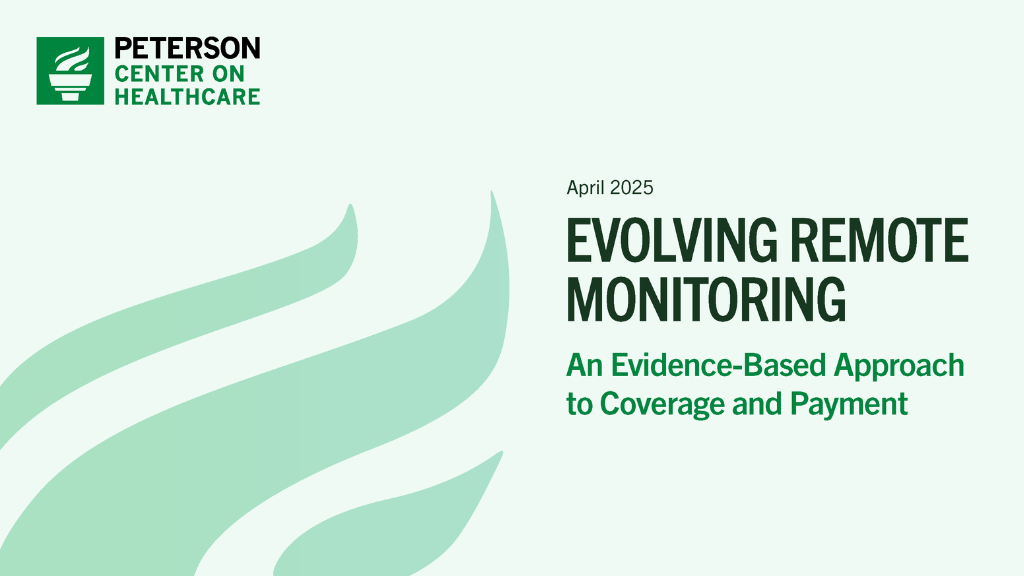Policy Brief
Evolving Remote Monitoring
April 16, 2025
PHTI

More people than ever use remote monitoring technologies to track their blood pressure, blood glucose, functional status, and more between doctor visits and outside of traditional care settings. Yet as PHTI’s work has shown, the health benefits of remote monitoring vary widely by condition and are time limited.
A new report from the Peterson Center on Healthcare synthesizes PHTI’s evaluations of digital diabetes management, musculoskeletal, and hypertension solutions, plus an analysis of trends in Medicare and Medicaid billing, highlighting the need for better alignment between coverage and reimbursement policies and the clinical benefits of remote monitoring tools.
The report makes recommendations on reimbursement, access, and data collection to ensure this rapidly growing area of healthcare better serves patients, while avoiding an increase in spending on ineffective and wasteful services.
For example, digital tools for the management of hypertension can be very effective at achieving faster blood pressure control than standard care: medications can be quickly adjusted, and patients are stabilized within three to six months. Yet over 40% of traditional Medicare beneficiaries receiving remote monitoring services for hypertension are monitored longer than six months—well beyond what is clinically effective. That is not sustainable for Medicare, nor is it a prudent use of taxpayer dollars.
The Center’s report recommends that payers and policymakers:
- Align coverage and reimbursement for remote monitoring services to clinical value
- Ensure access to high-impact remote monitoring services, and
- Improve data collection of remote monitoring services.